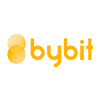Cryptocurrency investors often take blockchain protocols for granted when analyzing the potential of a cryptocurrency.
While a project’s roadmap and business efforts are essential, the different blockchain protocols and consensusConsensus
A general agreement among participants using and mining a cryptocurrency.
These consensus algorithms have considerable effects on security, inflation rates, and the overall value of each coin. Understanding them will help you determine which coins to invest in.
In this post, I will introduce a list of blockchain protocols that exist and explain their respective pros and cons from an economic perspective in 2023.
Let’s dive in!
Cryptocurrency investors often take blockchain protocols for granted when analyzing the potential of a cryptocurrency.
While a project’s roadmap and business efforts are essential, the different blockchain protocols and consensusConsensus
A general agreement among participants using and mining a cryptocurrency.
These consensus algorithms have considerable effects on security, inflation rates, and the overall value of each coin. Understanding them will help you determine which coins to invest in.
In this post, I will introduce a list of blockchain protocols that exist and explain their respective pros and cons from an economic perspective in 2023.
Let’s dive in!
Consensus algorithms keep the network alive and secure. They validate transactions, add trust to the peer-to-peer network, and reward miners for contributing to the network.
Table of Contents
What is a Blockchain Protocol?
A blockchain protocol is a common term for consensus methods. These methods are different systems that are implemented to reach consensus and validate transactions within a blockchain network.
Some of them require investors to purchase physical miningMining
The process by which new coins are created as transactions on a network are verified.
Below is a list of some well-known consensus algorithms that you should be familiar with. Most coins most likely utilize one, or a combination of these blockchain protocols.
Start by reading the Ultimate Guide on Blockchain Technology.
Proof-of-Work: Transforming Energy into Value
Lots of cryptocurrencies, including Bitcoin, use Proof of WorkProof of Work
The consensus algorithm introduced by Bitcoin. PoW requires miners to compete against each other to add new block and earn rewards.
Miner
An individual that volunteers computing power to verify transactions on a blockchain in exchange for block rewards.
In PoW schemes, miners participate in the network by contributing large amounts of computing power.
To participate, miners create physical mining rigs, commonly consisting of several graphics cards. More powerful rigs give miners a better chance of winning the next blockBlock
A segment of data recorded on the blockchain that can contain transactions and other information.
Block Reward
The payment given to a miner for securing a blockchain that uses POW (Proof-of-Work) consensus
Source: BitcoinMiningCom YouTube Channel
The takeaway here is that PoW-based blockchain protocols rely on miners who have physical rigs. This means there is an upfront cost on the miner.
The miner has to spend real money (usually more than a few thousand dollars) to have any chance of winning a block rewardBlock Reward
The payment given to a miner for securing a blockchain that uses POW (Proof-of-Work) consensus
In the case of Bitcoin, miners can poolMining Pool
A group of people online who agree to combine their mining rigs into one for more collective mining power. They split rewards evenly based on each person's mining power.
The Economics of PoW.
Users have to spend thousands of dollars on building mining rigs to be part of PoW networks. Without these invested miners, no coins would exist.
Many argue that the prices of the mining rigs in addition to electrical cost (your electricity bill will increase significantly from mining) sets a nice base value for a PoW coin.
Miners will not want to sell a coin for less than the ‘wholesale’ cost they paid to mine it.
If you want to find out the cost of mining of a coin that utilizes a PoW protocol, look at:
- The cost for miners to mine new coins (equipment + electricity)
- The block time and reward
Whattomine.com is an excellent starting place to explore the cost of mining different coins.
Consider it like this. If a PoW scheme has:
- Fast block times
Block time
The time it takes to mine a new block. - High block reward
- Low Total Supply
Total Coin Supply
A measure that describes how many coins of a given cryptocurrency can exist (after all mining is completed, if applicable).
Then you can imagine that the total supply will hit its max quickly. As long as demand is there to fulfill the fast initial rate of supply, the coin should perform fine. Otherwise, it may be best to wait until all coins are mines, to see how the market reacts.
On the other hand, if a PoW scheme has:
- Slow block times
- Low block reward
- Low or High Total Supply (doesn’t matter much in this case)
Then less demand is needed to keep up with the slower inflation rate. In this example, the total supply isn’t as relevant because the inflation rate is so slow. Purchasing while the coin is new and scarce may be a wise idea here.
Proof-of-Stake: Say Goodbye to Mining Rigs
Proof of StakeProof of Stake
PoS. A method of minting new coins and securing a platform by allowing users to stake their coins and receive more coins as a reward. Introduced as an energy efficient alternative to PoW (Proof of Work).
PoS does not require its users to buy physical mining rigs or spend huge amounts of computing power to participate.
Instead, PoS allows all coin holders to contribute to the network easily. As long as you hold coins in your wallet, activate stakingStaking
The act of locking up one's coins or tokens to help verify transactions for cryptocurrencies with Proof of Stake consensus mechanisms. Stakers earn staking rewards for providing this service.
Staking Rewards
An alternative to mining rewards. Staking rewards are earned by putting a certain amount of your cryptocurrency up as a 'stake' to confirm transactions. Rewards are given for doing this.

Generally, the more coins you hold, the more you contribute to a network and the better chances you have of solving the next block. In short, PoS incentivizes holding.
The Pros and Cons to PoS
PoS and PoW have similar problems but in different ways.
In PoS, a wealthy person can buy a majority of coins and reap most of the benefits. This does NOT provide for a safe or fair economic environment. That person can potentially sell their stash and crash the price.
Similarly, in PoW, a wealthy person can build many mining rigs to control the hash power of the network, reaping most of the block rewards.
In PoS, unlike PoW, you have no baseline of physical cost to create a coin. The only metrics you have are total supplyTotal Coin Supply
A measure that describes how many coins of a given cryptocurrency can exist (after all mining is completed, if applicable).
Circulating Supply
The volume of coins being held and spent at a given time for a given cryptocurrency.
This makes it a bit riskier to some people because the price is not backed by anything physical, and instead, backed by people’s beliefs.
On the other hand, the upside is that you can gain stakingStaking
The act of locking up one's coins or tokens to help verify transactions for cryptocurrencies with Proof of Stake consensus mechanisms. Stakers earn staking rewards for providing this service.
Delegated Proof-of-Stake: Electing Trusted Nodes
DPoS has been introduced to the scene after PoS and stands for delegated proof of stake.
The reason for this name is because there are delegates (or participants, or nodesNode
A computer that runs a cryptocurrency’s software and validates transactions.
Not anyone can to stakeStaking
The act of locking up one's coins or tokens to help verify transactions for cryptocurrencies with Proof of Stake consensus mechanisms. Stakers earn staking rewards for providing this service.

Bitshares is a big proponent of DPoS. Delegates on Bitshares can tune network parameters such as block intervals, transaction times, and fee schedules.
On the other hand, different networks have delegates with different power, but the concept remains the same.
Ultimately, DPOS is meant to democratize PoS environments by creating an agreed upon trusted group of delegates responsible for validating the network.
The Downside to DPoS
The main downside here is that crypto enthusiasts can join a network early, buy lots of coins and vote for each other, essentially centralizing the network.
It is still challenging to perform this type of attack, but it is certainly possible, and a major downside to DPos for most people.
Additionally, users don’t trust to vote for other nodes which may not have good uptime. If the delegate does not have sufficient uptime and fails to contribute to consensus, then their reputation score will go down.
Generally, in these networks, delegates have a reputation which will affect whether or not they are voted again by the community stakeholders.
Check out the full ‘DLTs for dummies’ guide!
Proof of Weight: How Much Does Your Node Weigh?
Proof of Weight is another blockchain protocol gaining interest with projects that have more literal applications. For example, a file storage project would most likely use a Proof of Weight type of scheme.
In PoS, stakers’ effectiveness is judged by the relative number of coins they hold, while in Proof of Weight takes into account the number of coins in addition to the number of files (or any other measurable metric) they hold for the network. With regards to a file storage project, the metric would be the amount of IPFS (file) data users are storing.
This means that there is an incentive to hold coins AND contribute meaningfully to the network.

Which is the best blockchain protocol?
All these consensus algorithms were created to reach a specific goal: effective decentralizationDecentralized
Distributed amongst its users rather than controlled by one group or within one certain area.
The reality is that it is often much more expensive to buy all of the coins in an economy than it is to have enough mining rigs to dominate a new blockchain in terms of hashing powerHashing Power
The power of a mining rig. Similar in concept to the Horse Power of a vehicle.
As a result, PoS is seen as a better alternative from a technical point of view, as it is much harder to manipulate and better protects against 51% attacks51% Attack
A hypothetical attack in which a malicious individual gains control of more than half of a cryptocurrency’s hashing power and is then able to re-write old blocks, allowing double-spend.
Even Ethereum has moved from a PoW model to PoS.
I am a fan of PoS. I enjoy staking coins on my computer to earn passive income and believe it is more difficult for malicious actors to attack the network.
Pos provides virtually no barrier of entry to act as a contributing node in the network to gain rewards. This is the reason why the crypto community favors POS.
More awesome resources:
- Should You Invest in Bitcoin?
- The 5 Best Ways to Buy Bitcoin
- How Much to Invest in Bitcoin
- The Ultimate Crypto Tools Checklist
- Own a website? Link to this article!
- Willing to spread the love? Share it on social!



















